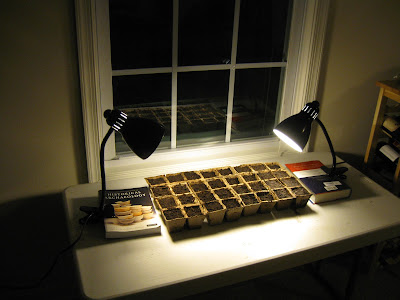 I did not post this blog yesterday because I was away in Washington, DC at the Smithsonian American Art Museum. It was my great privilege to take a private tour of their current exhibit, "The Civil War and American Art," with the museum's senior curator of painting and sculpture, Eleanor Jones Harvey. Because I had been involved with our recent exhibit, "Bringing the Story of War to Our Doorsteps," based around "The Dead of Antietam" photography of Alexander Gardner, I was asked to meet Dr. Harvey and take an intimate look at their wonderful exhibit at the Smithsonian. If you have an opportunity, please do stop in at the Smithsonian American Art Museum to see their Civil War exhibit. It is much more than just a collection of Civil War paintings; rather, it takes a wider view of art during the period and how the war impacted the creation and reception of artwork.
I did not post this blog yesterday because I was away in Washington, DC at the Smithsonian American Art Museum. It was my great privilege to take a private tour of their current exhibit, "The Civil War and American Art," with the museum's senior curator of painting and sculpture, Eleanor Jones Harvey. Because I had been involved with our recent exhibit, "Bringing the Story of War to Our Doorsteps," based around "The Dead of Antietam" photography of Alexander Gardner, I was asked to meet Dr. Harvey and take an intimate look at their wonderful exhibit at the Smithsonian. If you have an opportunity, please do stop in at the Smithsonian American Art Museum to see their Civil War exhibit. It is much more than just a collection of Civil War paintings; rather, it takes a wider view of art during the period and how the war impacted the creation and reception of artwork.Outside of stuffy museum galleries, it really feels like spring! As temperatures rise and the Sun stays out longer, people's spirits seem brighter and the garden is beginning to wake up. I enjoyed the wonderful weather over the weekend and got out in the garden to finish preparing it for some new tenants. On some of the perennial plants, I cut back the last of the winter die-off and pruned for fresh spring growth.
I also started planting my first indoor seedlings on Saturday. Last year I started some seeds a few weeks earlier, but I am growing some different plants this season, so it wasn't quite as important to start so early.
On this first round, I sowed five varieties of tomatoes, each of which will look a little different than your modern kitchen-variety tomato if and when they come to fruit this summer. One unusual variety, the poma amoris minora lutea or lesser yellow love apple, is a small variety of yellow tomato that has been cultivated since at least the 16th century.
I have also sown six different medicinal plants, none of which I have successfully grown in the garden before. Some of them may be a bit too tricky and temperamental to survive in the Pry Garden, but I am going to give everything a chance and hope for the best.
One plant that I am particularly unsure about is the Blue Flag Iris. This was a popular medicinal plant during the Civil War, and it was listed on numerous drug supply tables by the Confederate States Medical Department. I have never tried to grow an iris from seed before, so I am curious whether it will work out. I worry about growing it in the garden because the Blue Flag Iris likes a very wet environment, which will be difficult to provide.
I have planted each in small biodegradable pots that will make it easier to transplant seedlings into the garden in the spring. I used these last year on just a few plants with great success. Even though they are biodegradable, I don't just plant the whole pot in the ground; I usually tear off the sides and throw those in the compost because they don't really break down that quickly.
My indoor growing set up is similar to last year. I have a small table set up near a window. I don't really get enough light through that window though, so I have added two desk lamps with compact florescent bulbs. I keep my home fairly warm and I use a spray bottle to make sure the little pots stay moist, but not too wet. I am hoping that many of these seeds will germinate into healthy plants that will live well in the Pry Garden.





It's exciting to see the garden progress...even in the early seeds stages.
ReplyDeleteI really hope the Iris will grow in the garden, they are beautiful!